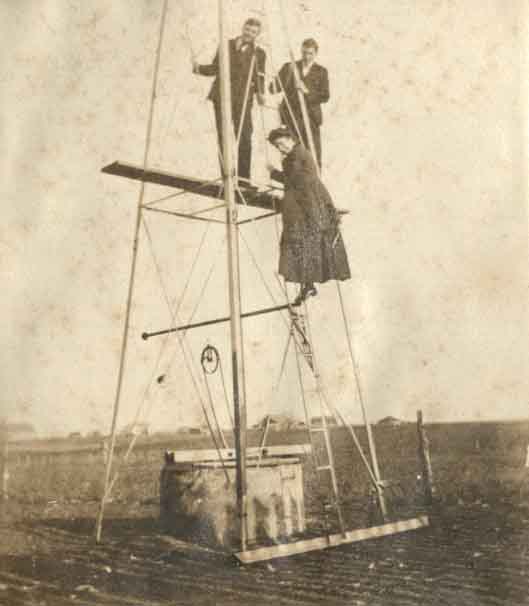May is Historic Preservation Month. To learn more about the history of National Historic Preservation Month check out this National Park Service web page: https://www.nps.gov/subjects/historicpreservation/national-historic-preservation-act.htm.
When people think of historic preservation, the first thought is generally of large, grandiose buildings in need of repair. Historic preservation encompasses not only architecture, but culture, religion, archaeology, place, people, and other related topics. It can be achieved through a variety of methods such as repairing historic buildings, reenactments, historic dance and music, and digitizing fragile and/or popular material that cannot withstand excessive handling.
The Texas Collection provides historic preservation through archival and print materials. In doing so, access and education are provided to a larger audience, two of the primary purposes for this type of work. Read on as our staff shares projects they have worked with and tips to keep in mind for your own preservation needs.
Paul Fisher, Assistant Director and Processing Archivist:
Many Texans and Texas groups have supported historic preservation through the years. Several of our collections document these activities, such as the Adina E. De Zavala papers. De Zavala was a noted historic preservation figure in San Antonio in the early 1900s.
Baylor University was founded in Independence, Texas. Texas Collection staff works with various partners in Independence to operate two historic sites as well as a visitor center. Visitors learn about early Texas history, historic preservation efforts, and the history of higher education in Texas.
Sylvia Hernandez, Archivist
The Ima Joy Chodorow Gandler Texas Jewish collection is one of twenty-four collections at The Texas Collection documenting the Jewish Community in Waco. Even with all the information provided, there are still gaps, mainly with the photographs.
*Pro Tip* Label photographs with names, dates, and events depicted.
Geoff Hunt, Audio and Visual Curator:
 In the early 1970s, Roger N. Conger donated Fred Gildersleeve’s film archive to The Texas Collection which included approximately 1,100 glass, 8×10 negatives. They had been stored in a backyard shed for decades and were damaged by the extreme heat of Texas summers. Since then, we have carefully gone through each one of Gildersleeve’s negatives, placed them in acid-free, archival folders and boxes, and have stored them on heavy-duty shelving in a climate-controlled environment. This ensures proper long-term preservation so future generations can enjoy this rich collection as much as we do!
In the early 1970s, Roger N. Conger donated Fred Gildersleeve’s film archive to The Texas Collection which included approximately 1,100 glass, 8×10 negatives. They had been stored in a backyard shed for decades and were damaged by the extreme heat of Texas summers. Since then, we have carefully gone through each one of Gildersleeve’s negatives, placed them in acid-free, archival folders and boxes, and have stored them on heavy-duty shelving in a climate-controlled environment. This ensures proper long-term preservation so future generations can enjoy this rich collection as much as we do!
The glass negative in the picture demonstrates this damage where a portion of the silver-gelatin emulsion layer heated up and chemically bonded with another glass negative stacked above it. Despite this, the image is still a valuable part of the collection, as much of the picture is still intact. (Waco Old Corner Drug Store, c. 1911. Gildersleeve-Conger collection, The Texas Collection, Baylor University).
Amie Oliver, Associate Director and Librarian/Curator of Print Materials
Do not use nails to bind a book. Several years ago, we had an annual that we could not open because the binding was too tight. We sent it to the campus preservation specialist who discovered nails, which had rusted, had been used to rebind the item. He carefully removed the nails, and because the spine was destroyed, created an acid-free phase box to house the annual.
*Pro Tip* Protect materials (books, photos, documents, etc.) by keeping them cool, dark, and dry. Sunlight can irreversibly fade items and heat can cause them to degrade quickly while moisture invites mold.
Brian Simmons, Coordinator for User and Access Services:
A common preservation issue that occurs is the use of adhesive tape to repair damaged books or documents. Often, I have come across items that have been repaired with cellophane tape decades ago. The repaired area is usually discolored and the piece of tape itself has fallen off. While tape might fix the problem in the short term, over time the adhesive can cause permanent damage.
*Pro Tip* Storing damaged items in an acid free box or folder is recommended. An acid free container will keep all parts of cherished heirlooms together without incurring further damage.
Benna Vaughan, Manuscripts Archivist:
The Texas Collection is home to the Marvin Griffin materials, a prominent African American pastor and activist. The collection contains an extensive amount of audio-visual materials: three compact discs, seven video tapes, 48 reel-to-reel tapes, and approximately 1,571 audio cassettes. In order to preserve these materials to provide access in a digital format, The Texas Collection is working with Digitization and Digital Preservation.




